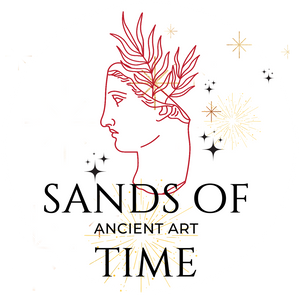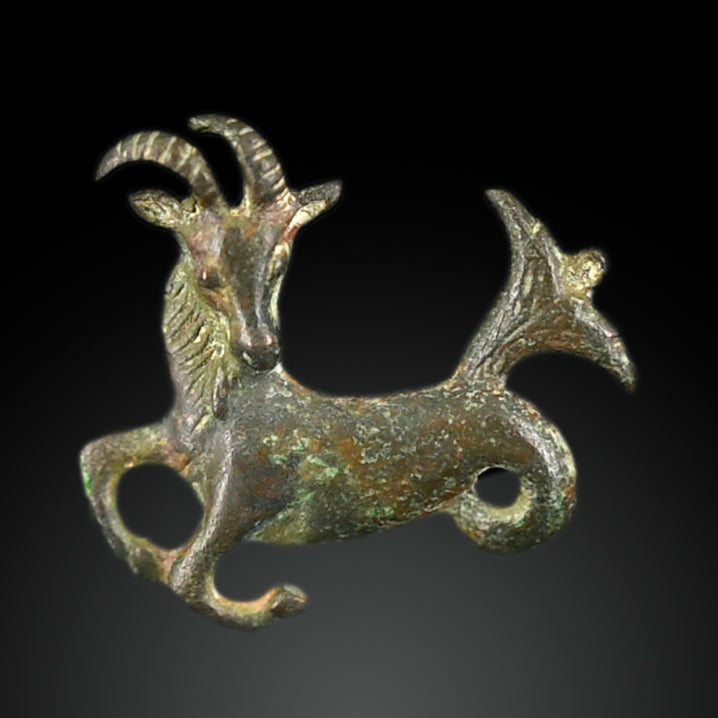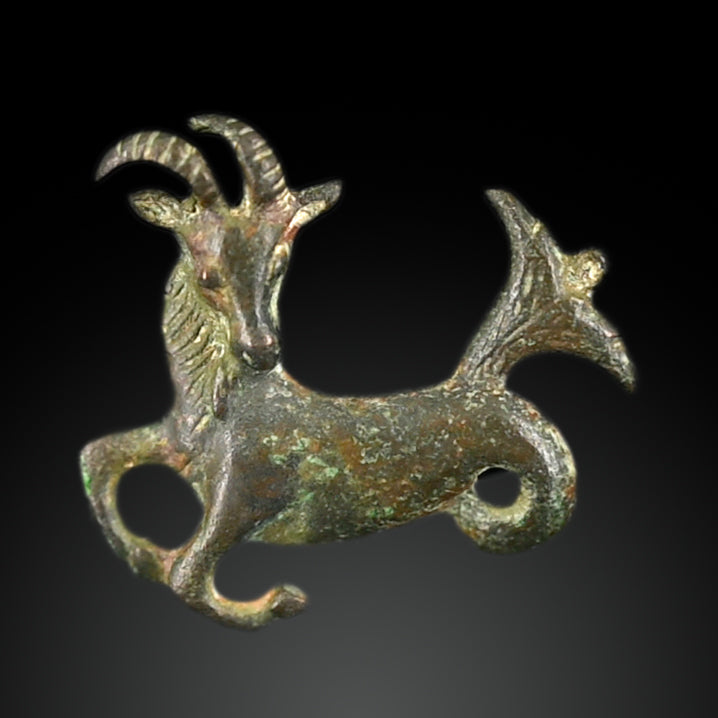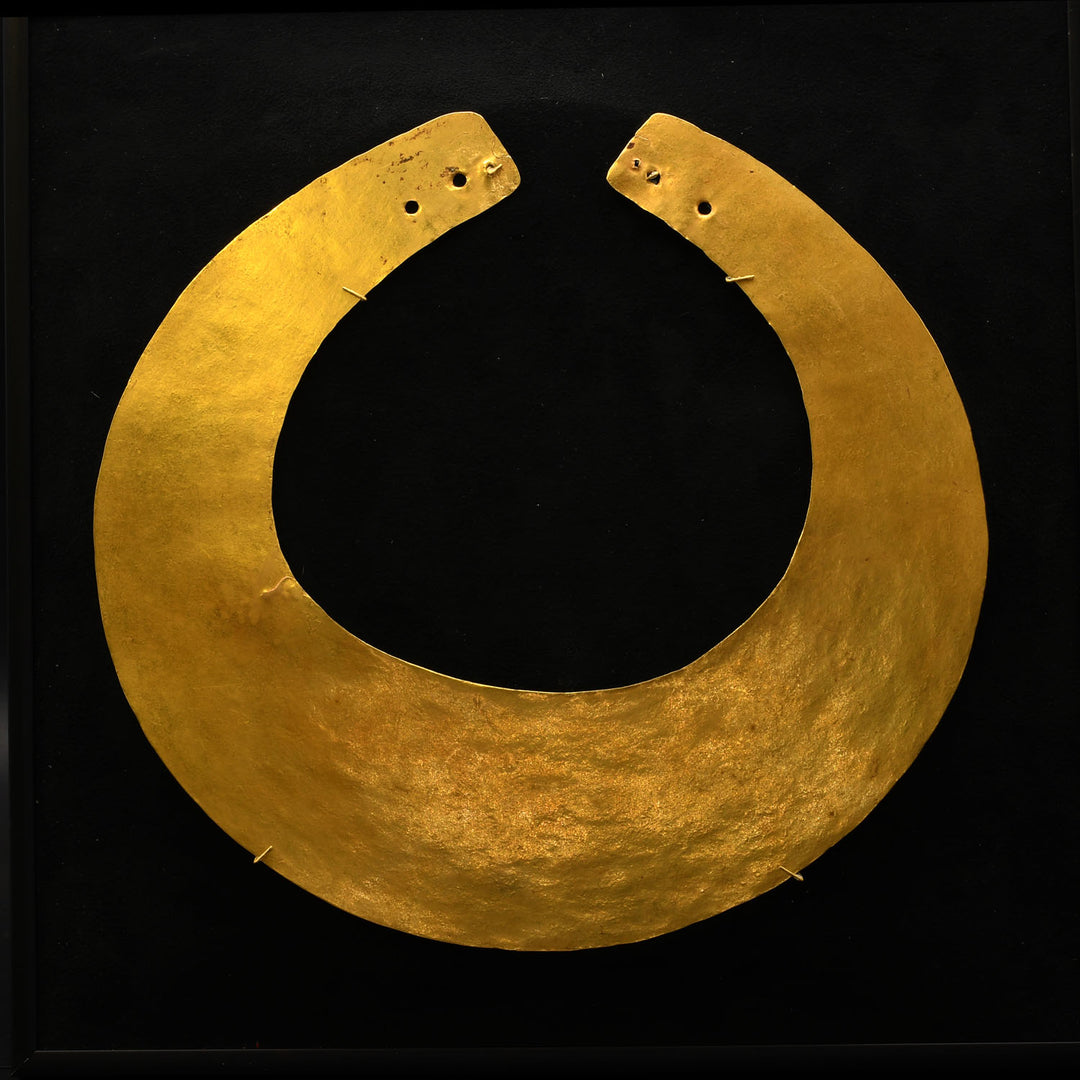A published Group of Millefiori, Mosaic and Eye Glass Beads, Roman Imperial Period, ca. 1st century BCE/CE
EJ2130
- This object qualifies for free and fast worldwide shipping.
This stunning necklace features eight distinct multicolor glass millefiori cylindrical beads, each adorned with various stylized floral motifs and solid color borders. These beads are enhanced by ovoid glass eye beads, along with antique 18K gold spacer beads in the Etruscan style.
Background: "Millefiori," which translates to "a thousand flowers" in Italian, refers to a popular floral design pattern. Millefiori beads, a type of mosaic glass, were created in ancient times by placing numerous sections of patterned glass canes in close proximity to each other and then heating them to fuse together. The resulting pad of millefiori glass was then rolled upon itself and shaped into a bead. When Italian artisans reinvented millefiori glass, they typically applied cane pieces to a separate base, often the bead's core, and fused the components together. This technique is how ancient millefiori beads can be distinguished from more modern variations.
Tubular beads published: I. Grimm-Stadelmann (ed.), Aesthetic Glimpses, Masterpieces of Ancient Egyptian Art, The Resandro Collection, Munich, 2012, p. 239, no. R-789.
Medium: Glass, gold
Dimensions: Length: 18 inches (45.7 cm)
Condition: One tubular glass bead has been repaired from two original pieces with some loss along the break line, the balance are intact and in excellent condition overall. Restrung with Etruscan-style antique spacers of 18K gold.
Provenance: Tubular beads: The Alfred Wolkenberg Collection of Ancient Glass, Christies, London, 9 July 1991, lot 130, thereafter Resandro collection, Germany, acquired from the above sale, thereafter Christies, London, 12/5/2017, sale 14231, lot # 110.
Sands of Time provides a lifetime, unconditional guarantee of authenticity and provenance. Every object you purchase from us is accompanied by a Certificate of Authenticity, stating culture, provenance, and age.
Furthermore, we conduct due diligence to ensure the item, to the best of our knowledge, has not been illegally obtained from an excavation, architectural monument, public institution, or private property. Wherever possible, reference is made to existing collections or publications.
We ship Tuesday to Friday with FedEx and usually same day if your order is received before 2pm. Within the continental USA, packing, shipping and insurance is free. Depending on size and destination, delivery times range from one to five business days.
If we are shipping this object to you overseas, there is no charge for packing, preparation of all customs paperwork, insurance and carrier fees in compliance with all USA and International customs requirements.
We send overseas shipments with FedEx International Priority which usually means two to three day delivery to Europe and the UK, customs willing but contact us if you have a shipping preference.
Please note: International customers are responsible for all duties and taxes.



























